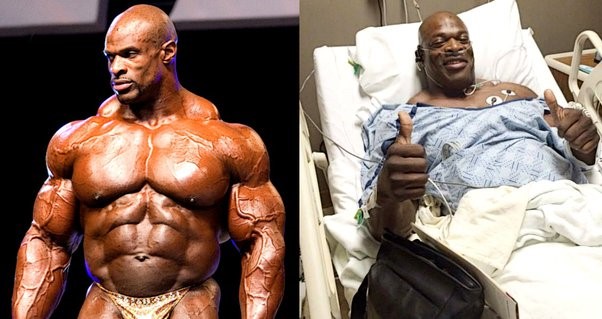Richardbrown
Guest

The quick answer is that it varies greatly depending on your workout regimen. Learn more about undone fitness in the sections below, along with when it's important to take a break.
How Fast Does Cardiovascular Fitness Decrease?
Cardiovascular fitness, also known as aerobic fitness or endurance, is developed over time by endurance athletes including runners, cyclists, swimmers, and dancers.
This kind of fitness won't go away overnight, but it will deteriorate with time. Typically, after roughly two weeks of inactivity, cardiovascular fitness begins to decline substantially.
The authors of a literature study looked at the research on "detraining," often known as declining fitness, and published their findings in Frontiers in Physiology in October 2020. The research indicates that among endurance athletes, a loss of cardiovascular fitness and endurance starts to develop after as little as 12 days of inactivity, however outcomes vary across different investigations.
However, those in good cardiovascular health will take up to a few months to completely lose all of their aerobic fitness, and the timeframe is dependent to each individual's capabilities. There isn't much research on how fitness continues to decline after several weeks of absolute inactivity.
Don't forget that, unless someone is hurt, a break from their normal exercise doesn't usually translate into total idleness. According to the literature study previously mentioned, frequent exercisers' cardiovascular fitness appears to begin to decline noticeably after 35 days (five weeks) of irregular, mild exercise. That implies you might also notice a decline in cardiovascular fitness if you were exercising frequently and subsequently significantly reduced the intensity of your workouts.
How Fast Does Strength Decrease?
In two to three weeks, it's unlikely that muscle mass loss, which could affect your ability to lift weights or carry groceries, will have a significant impact. However, this also depends on a number of factors, including age, diet, sleep habits, and your level of fitness before the break, among others. an investigation conducted on 21 male adolescent athletes that was published in May 2020 in the International Journal of Exercise Science indicated that even three weeks of detraining did not affect the participants' muscle thickness, strength, or athletic performance.
Age is a significant role in whether or not muscle strength is lost, according to an earlier study. In two age groups of people, 20 to 30 year olds (18 participants) and 65 to 75 year olds, researchers examined the effects of strength training and detraining (23 participants). All individuals' one-repetition maximal strength increased after nine weeks of resistance training (the younger group by 34 percent, and the older group by 28 percent). The younger adults only lost 8% of the strength they had gained after 31 weeks of detraining, whereas the older adults lost 14%. The study found that while cardiovascular fitness declines more slowly as we age, loss of strength occurs more swiftly.
Training Breaks Might Be Beneficial for You Even If You Lose Some Fitness.
Rest periods are crucial for the body and the mind, especially after periods of strenuous training, even if you will lose some fitness if you take them. Recovery is crucial from a physical and emotional perspective since it enables you to improve your fitness levels more significantly over time.
A running coach friend of mine claims that after each marathon season, he always takes a predetermined two-week vacation. He implores his athletes to follow suit. Some people desire more time, while others want less, but it's crucial to take a break from jogging so that the body and mind can relax and recharge.
A break from training helps athletes prevent burnout and muscle overuse injuries. Taking a vacation from exercising, in other words, can help you avoid burnout.
However, there is a significant difference between taking purposeful rests from activity (such as after an endurance event) and unintended ones (where you have no plans of getting back into a routine). In other words, having a little vacation can be helpful to prevent burnout and injury, but it shouldn't turn into a long-term lifestyle choice.
Why? Getting back into shape after a long absence presents unique psychological and emotional difficulties.
My friend had a terrible time in this area. Usually, I would log runs of over ten miles, but after months of not jogging, ten miles seemed "insurmountable." It's undoubtedly a mental challenge that was particularly challenging in the beginning.
3 Tips for Preventing Fitness Loss
1. Continue to move throughout the day
There are various ways to include exercise into your day, regardless of your current level of fitness or how it changes as you progress. Exercises utilizing only your body weight (no gym or equipment needed), hiking, or even gardening, are all wonderful choices.
To prevent the loss of strength, I advise light exercise, such as body resistance exercises that don't raise your heart rate. The prevalence of fitness applications is also helpful in this effort. Naturally, it's crucial to get your doctor's approval before engaging in any activity if you're taking a break due to an injury or for another medical reason.
2. Don't discount body-weight exercises
Exercises that strengthen the body's muscles and promote flexibility are essential if preventing fitness loss is the aim, even if die-hard runners may feel that strength-training exercises alone are an insufficient alternative for multi-mile runs.
To prevent muscle wasting, try performing bodyweight exercises like squats, lunges, and pushups (which you may modify by performing on your knees), as well as regular stretching. There are a ton of free fitness apps and videos available that can lead you through quick body-weight exercises.
3. Make strength training a priority
Focus on strength while taking a break from running to heal from an injury. Squats, deadlifts, and swings are just a few exercises you may perform with a kettlebell to help build stronger glute muscles and a more robust body.


 Please Scroll Down to See Forums Below
Please Scroll Down to See Forums Below 










